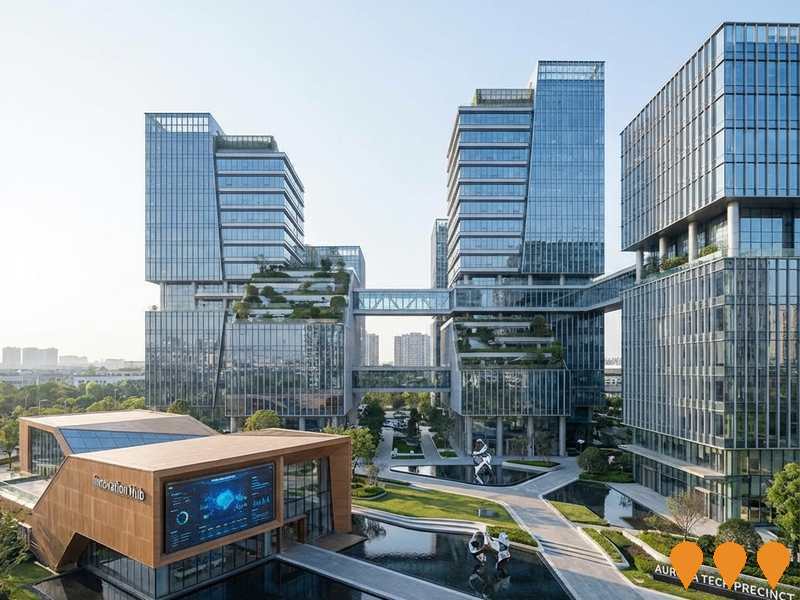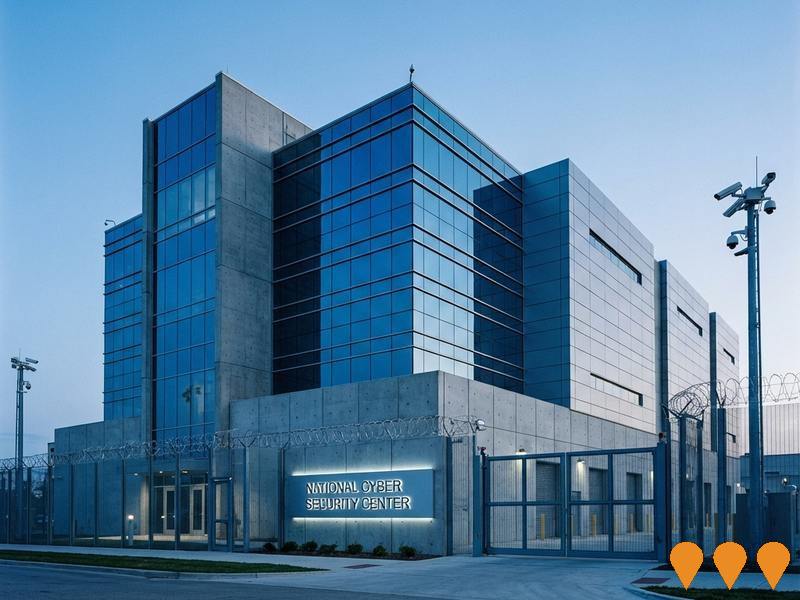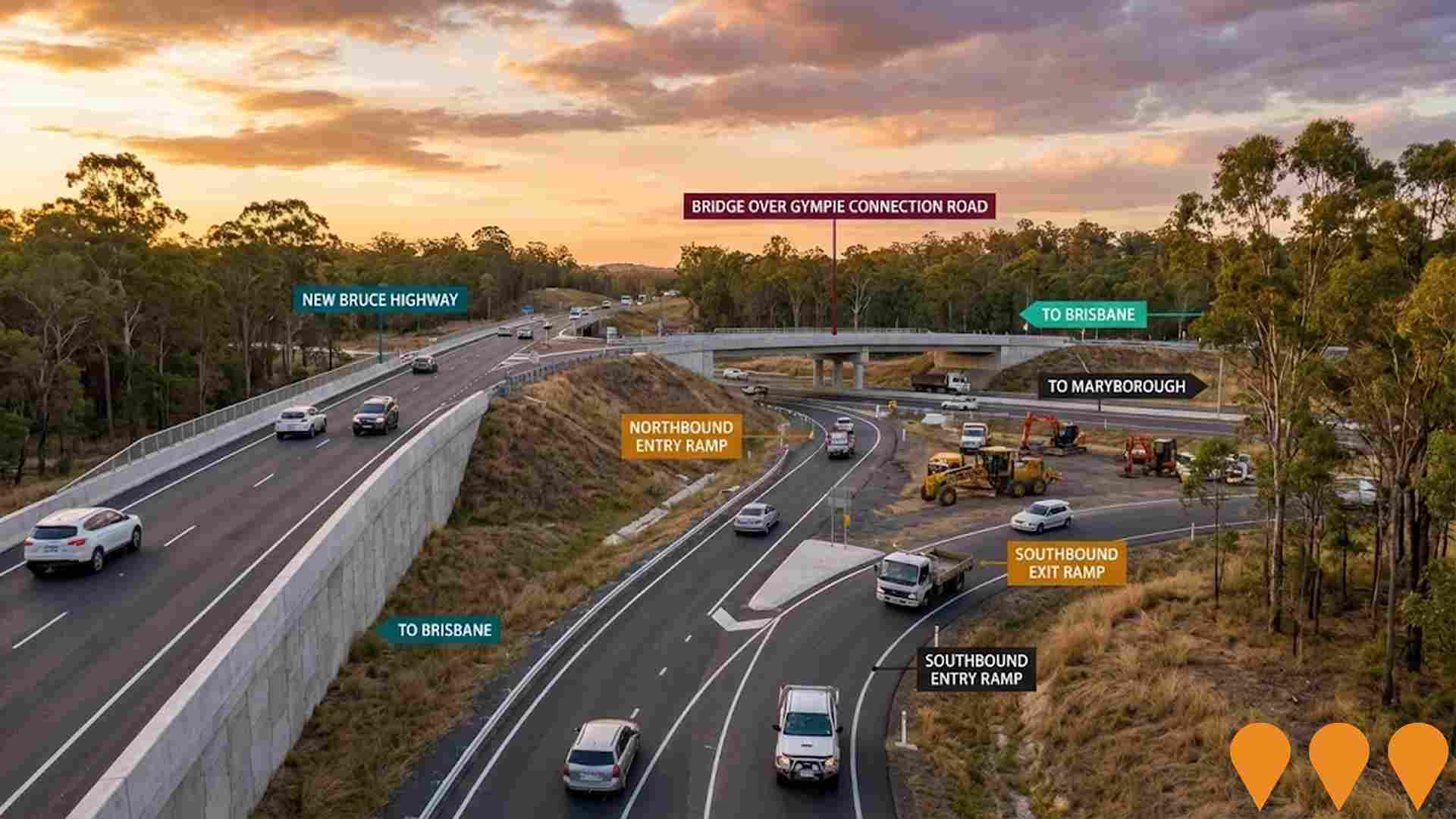Chart Color Schemes
est. as @ -- *
ABS ERP | -- people | --
2021 Census | -- people
Sales Activity
Curious about local property values? Filter the chart to assess the volume and appreciation (including resales) trends and regional comparisons, or scroll to the map below view this information at an individual property level.
Find a Recent Sale
Sales Detail
Population
Maryborough is positioned among the lower quartile of areas assessed nationally for population growth based on AreaSearch's assessment of recent, and medium term trends
Maryborough's population, as of August 2025, is approximately 19,275. This figure represents an increase from the 2021 Census count of 18,558 people, a rise of 3.9% or 717 individuals. This growth is inferred from ABS estimated resident population data: 19,258 in June 2024 and additional validated new addresses since the Census date. The population density stands at 228 persons per square kilometer. Interstate migration accounted for approximately 81.6% of recent population gains.
AreaSearch uses projections from ABS/Geoscience Australia (released in 2024, base year 2022) and Queensland State Government's SA2 area projections (released in 2023, based on 2021 data). For areas not covered by these projections or years post-2032, proportional growth weightings are applied using ABS Greater Capital Region projections. Future demographic trends suggest a population increase of around 5.2% by 2041, with an expected expansion to 20,292 persons over the next 17 years.
Frequently Asked Questions - Population
Development
Residential development activity is slightly higher than average within Maryborough when compared nationally
Maryborough has seen approximately 36 new homes approved each year over the past five financial years, totalling 182 homes. As of FY26, 7 approvals have been recorded. On average, 3.9 new residents arrive per dwelling constructed annually between FY21 and FY25. This demand significantly outpaces supply, potentially putting upward pressure on prices and increasing competition among buyers.
New properties are constructed at an average expected cost of $431,000, which is below regional levels, suggesting more affordable housing options for buyers. In FY26, there have been $112.4 million in commercial approvals, indicating strong commercial development momentum. Compared to the Rest of Qld, Maryborough has significantly less development activity, with 71.0% below the regional average per person. This constrained new construction typically reinforces demand and pricing for existing homes. Nationally, this level is also lower, reflecting market maturity and possible development constraints.
New development consists of 81.0% detached dwellings and 19.0% attached dwellings, maintaining Maryborough's traditional low density character focused on family homes. The estimated population per dwelling approval is 561 people, indicating a quiet, low activity development environment. By 2041, Maryborough is expected to grow by 1,000 residents. Current development appears well-matched to future needs, supporting steady market conditions without extreme price pressure.
Frequently Asked Questions - Development
Infrastructure
Maryborough has limited levels of nearby infrastructure activity, ranking in the 16thth percentile nationally
Changes in local infrastructure significantly affect an area's performance. AreaSearch has identified 12 projects potentially impacting this region. Notable ones are Energy Storage Industries' Battery Manufacturing Facility, Homes for Queenslanders - Maryborough Social Housing, Mary Harbour Development, and Hyundai Rotem Steel Roll Forming Facility. The following list details those most likely to be relevant.
Professional plan users can use the search below to filter and access additional projects.
INFRASTRUCTURE SEARCH
 Denotes AI-based impression for illustrative purposes only, not to be taken as definitive under any circumstances. Please follow links and conduct other investigations from the project's source for actual imagery. Developers and project owners wishing us to use original imagery please Contact Us and we will do so.
Denotes AI-based impression for illustrative purposes only, not to be taken as definitive under any circumstances. Please follow links and conduct other investigations from the project's source for actual imagery. Developers and project owners wishing us to use original imagery please Contact Us and we will do so.
Frequently Asked Questions - Infrastructure
Building Future Hospitals Program
Queensland's flagship hospital infrastructure program delivering over 2,600 new and refurbished public hospital beds by 2031-32. Includes major expansions at Ipswich Hospital (Stage 2), Logan Hospital, Princess Alexandra Hospital, Townsville University Hospital, Gold Coast University Hospital and multiple new satellite hospitals and community health centres.
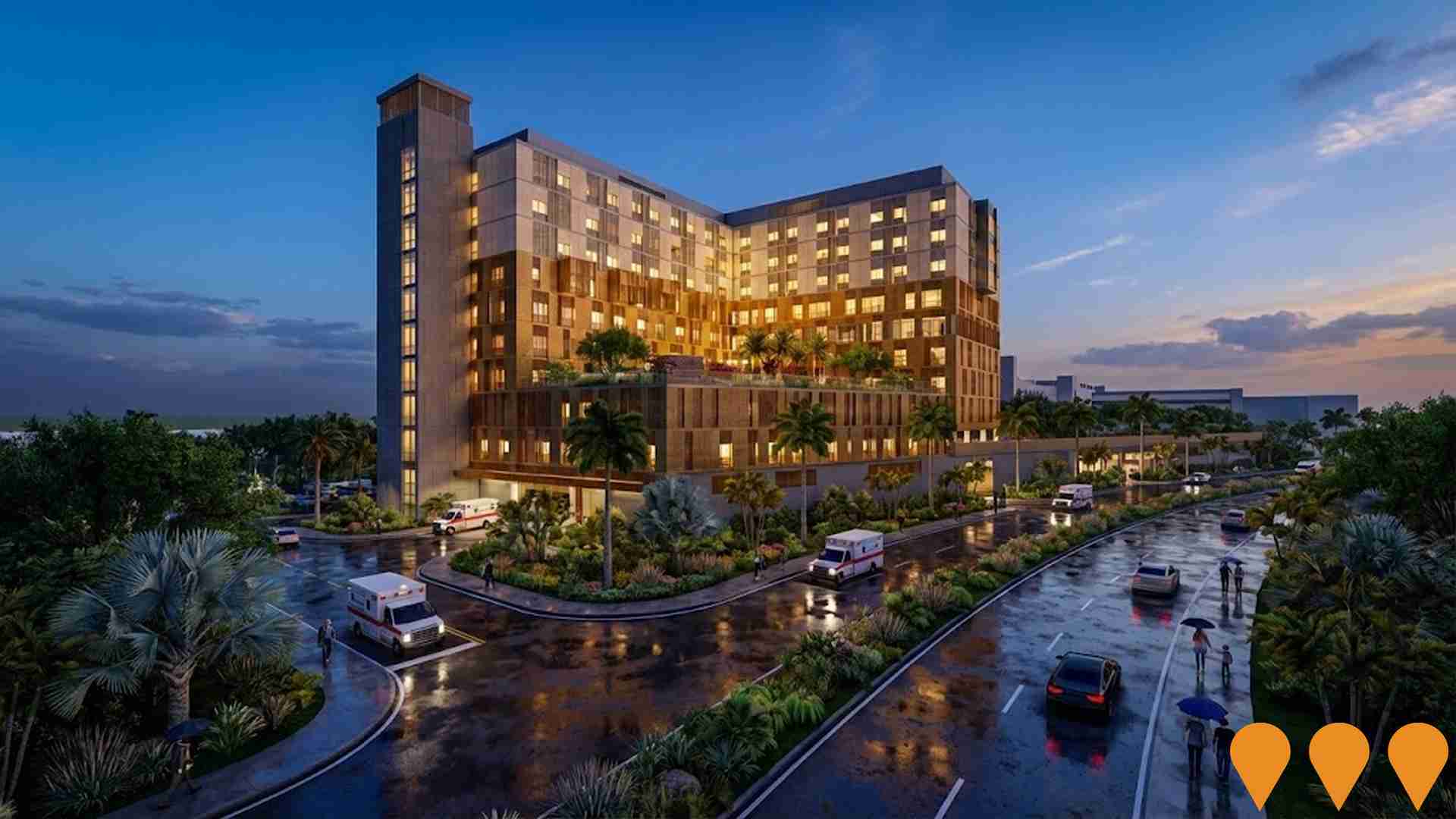
Forest Wind Farm
Australia's largest wind farm project with up to 226 turbines and a capacity of 1,200 MW, located within commercial pine plantations in the Wide Bay region of Queensland. The project will generate enough clean energy to power approximately 650,000 Queensland homes and reduce CO2 emissions by over 3 million tonnes annually. It has received Commonwealth EPBC approval (2024) and Queensland Coordinated Project declaration, with construction expected to commence in 2026 subject to final investment decision.
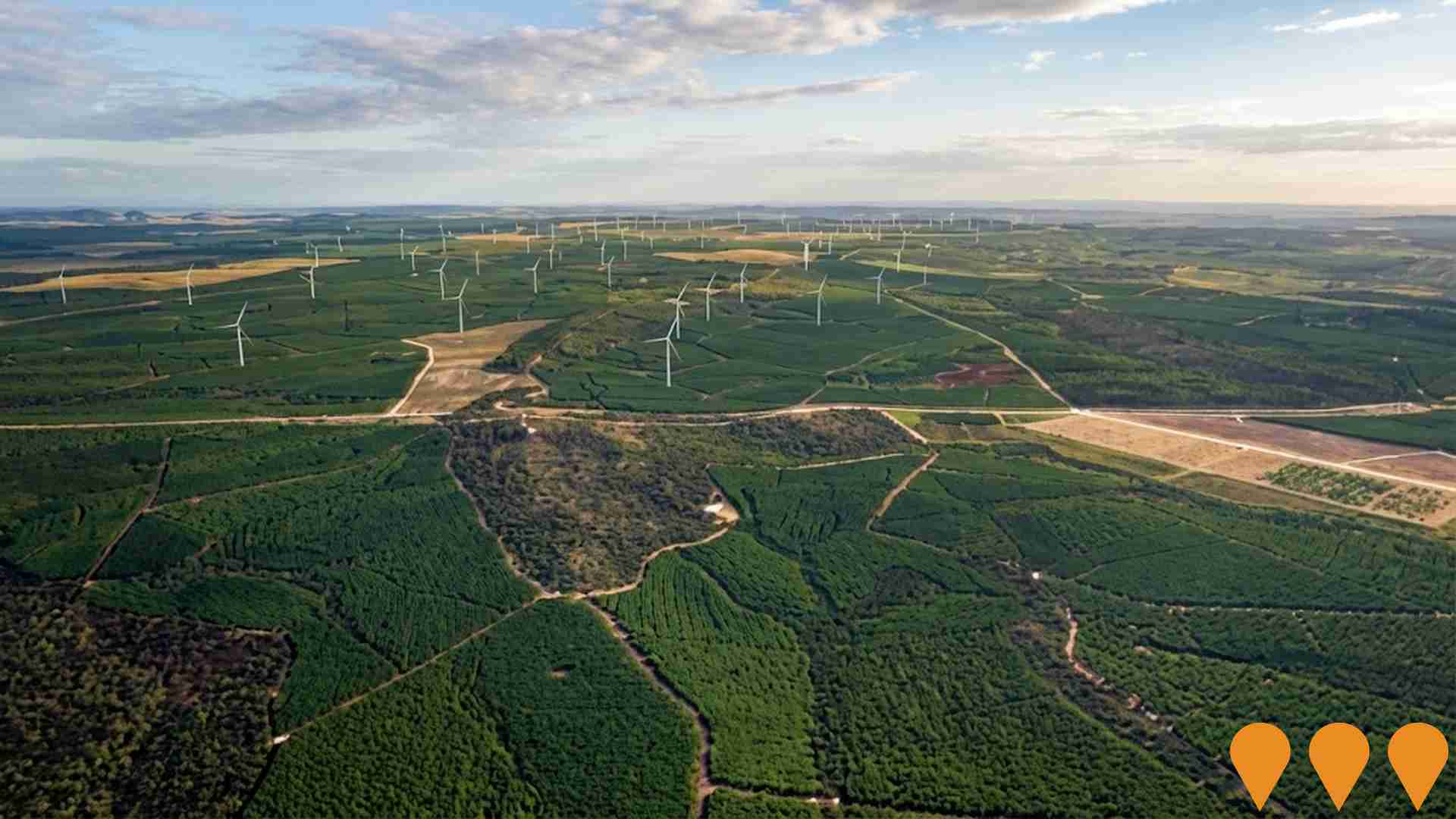
Queensland Train Manufacturing Program
The Queensland Train Manufacturing Program is delivering 65 new six-car passenger trains at a new purpose-built manufacturing facility in Torbanlea (Fraser Coast) with an additional maintenance and stabling facility at Ormeau (Gold Coast). Construction of the Torbanlea facility is well advanced in 2025 with major structural works and roofing complete, internal fit-out progressing and utilities connections underway. The first train is scheduled for completion and testing in late 2026, entering service in 2027. All 65 trains will be in service by 2032 to support Cross River Rail and the Brisbane 2032 Olympic and Paralympic Games. The program is currently supporting around 800 jobs in construction and manufacturing.
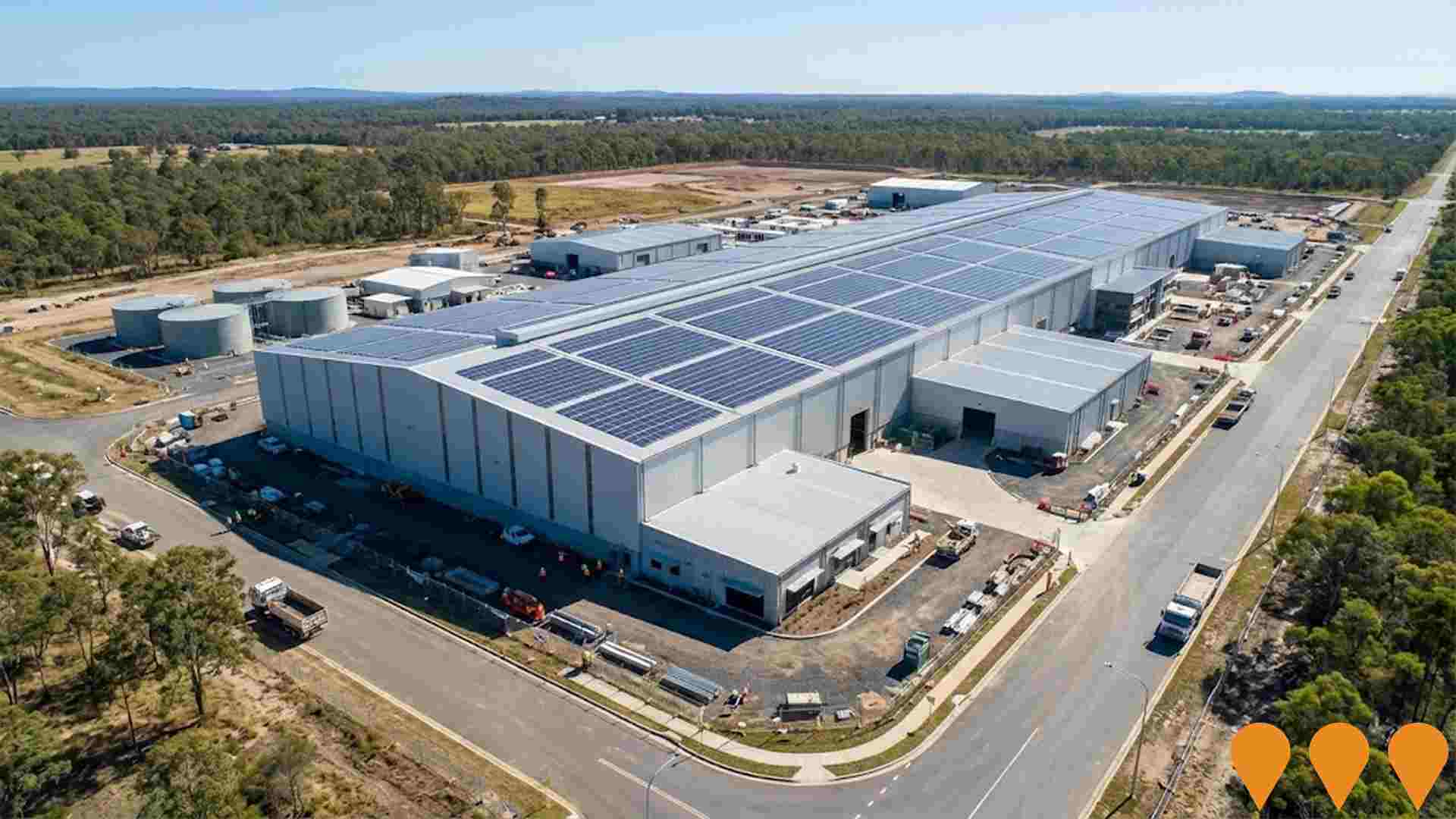
Mary Harbour Development
Large-scale 174-hectare master-planned mixed-use precinct proposed on the Mary River at Granville (Maryborough). Includes a 250-berth marina, 15-hectare harbour, resort hotel, conference centre, retail and community facilities, and residential development for approximately 3,500 residents (circa 1,800 dwellings). Originally proposed in the early 2000s by MSF Sugar, the project has remained shelved since 2015 due to lack of investment and market conditions. As of late 2025 there are no active development applications, construction contracts, or confirmed funding, and the project is considered dormant/indefinitely postponed.
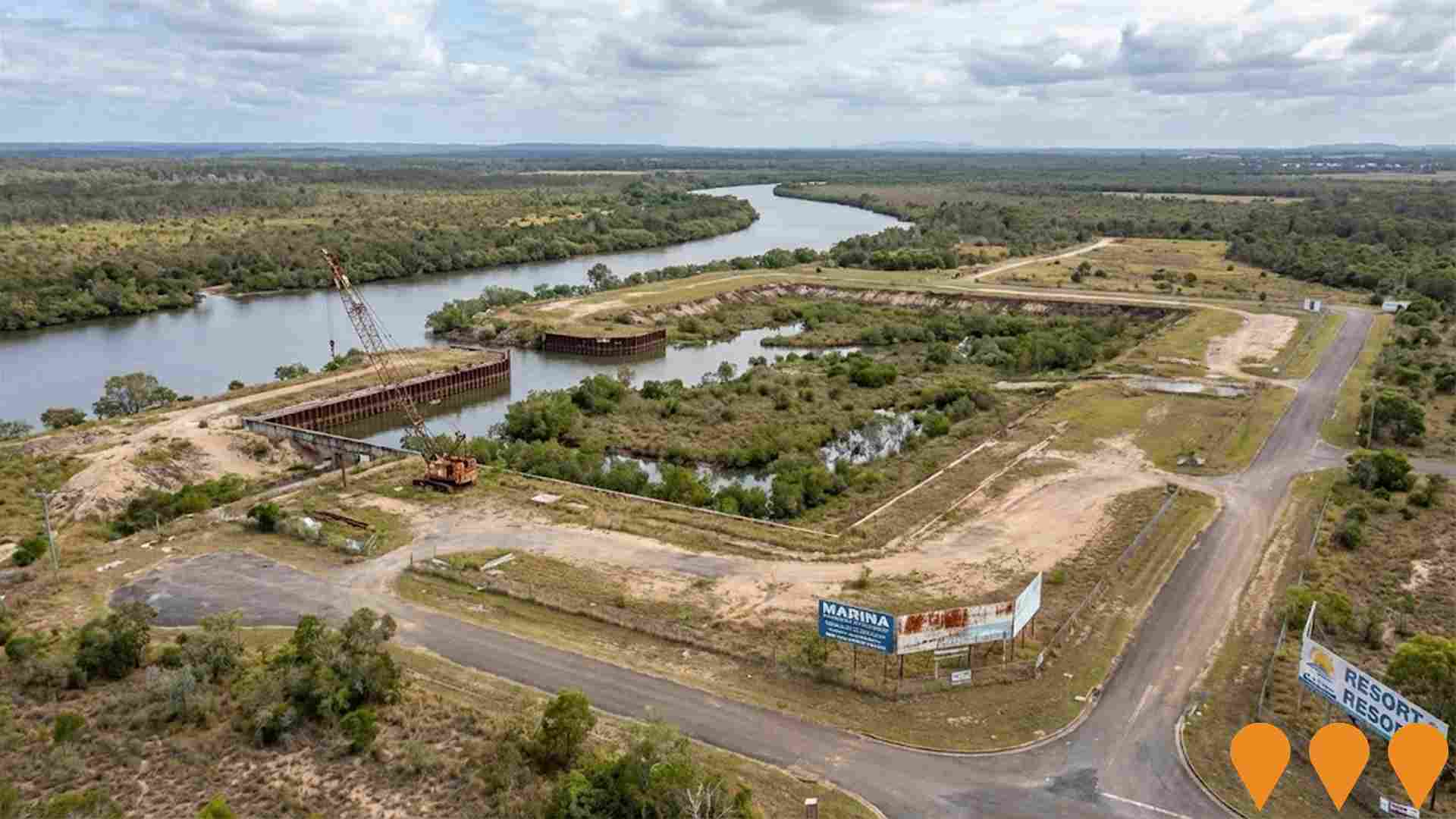
Energy Storage Industries (ESI) Battery Manufacturing Facility
Australia's first grid-scale iron flow battery manufacturing facility. $70 million facility producing 400MW of energy storage annually with 25-year battery life and 14-hour storage duration. Creating 273 full-time jobs when operational by mid-2029.
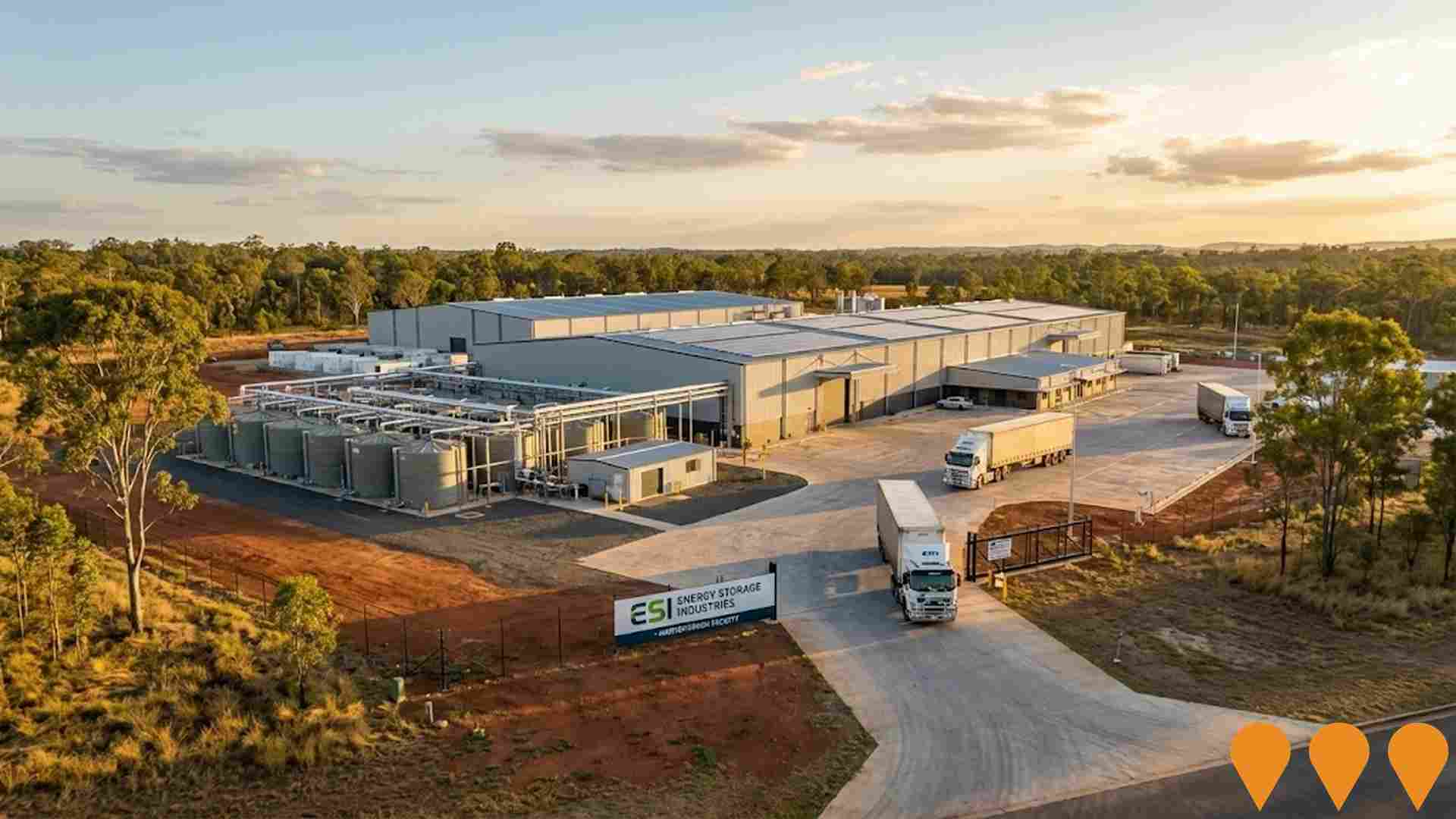
Hyundai Rotem Steel Roll Forming Facility
The Hyundai Rotem Steel Roll Forming Facility is a 30,000 square meter manufacturing plant in Maryborough West, producing sub-components for train car bodies using roll forming technology. It supports the Queensland Train Manufacturing Program by providing essential steel components for 65 new passenger trains, boosting local employment and supply chain in the Wide Bay region.
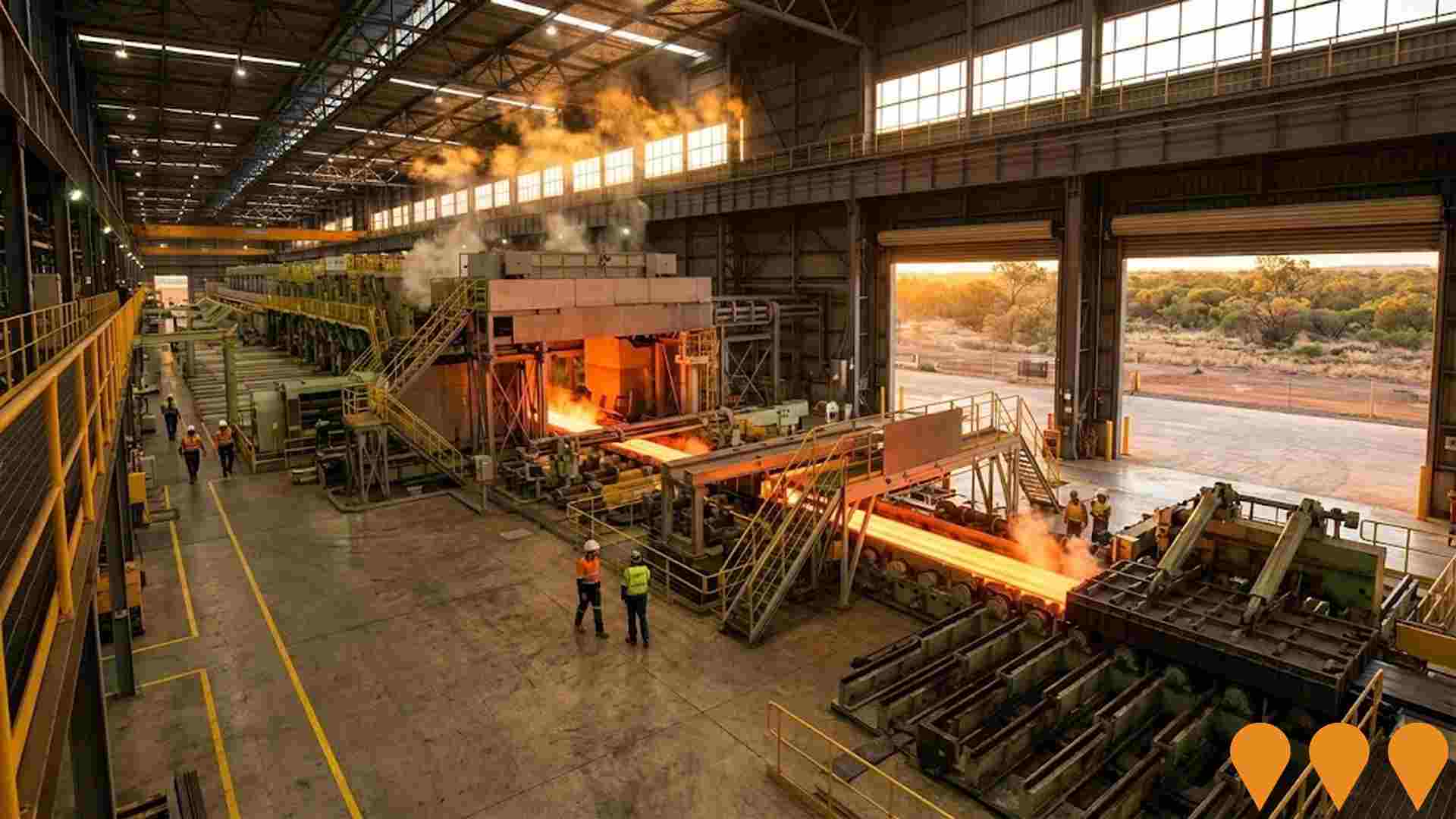
Rheinmetall NIOA Munitions (RNM) Manufacturing Plant
World's most modern munitions facility for 155mm artillery shell production. $90 million facility supporting regional manufacturing capability and creating up to 120 skilled jobs. The facility uses a 1250-tonne hot forging press and computerised machinery to produce 155mm artillery projectiles and metal parts for other munitions used by the Australian Defence Force as well as export markets. Currently produces 40,000 projectiles per year, with plans to expand to 100,000 per year.
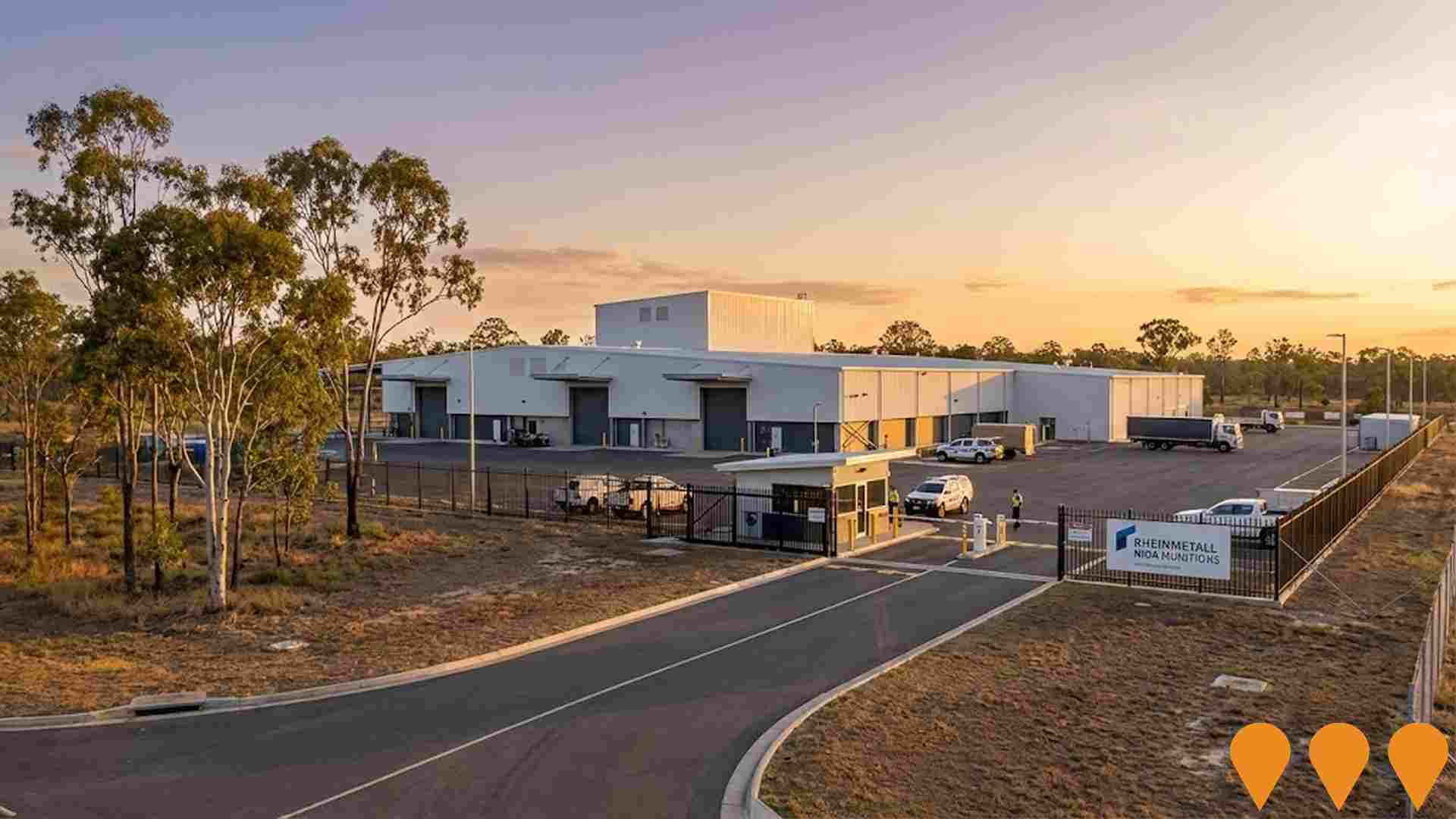
Hyne Timber Glue Laminated Manufacturing Plant
State-of-the-art 4000sqm glulam production facility incorporating latest automation technology. Supporting Queensland's sustainable timber industry with advanced engineered wood products.
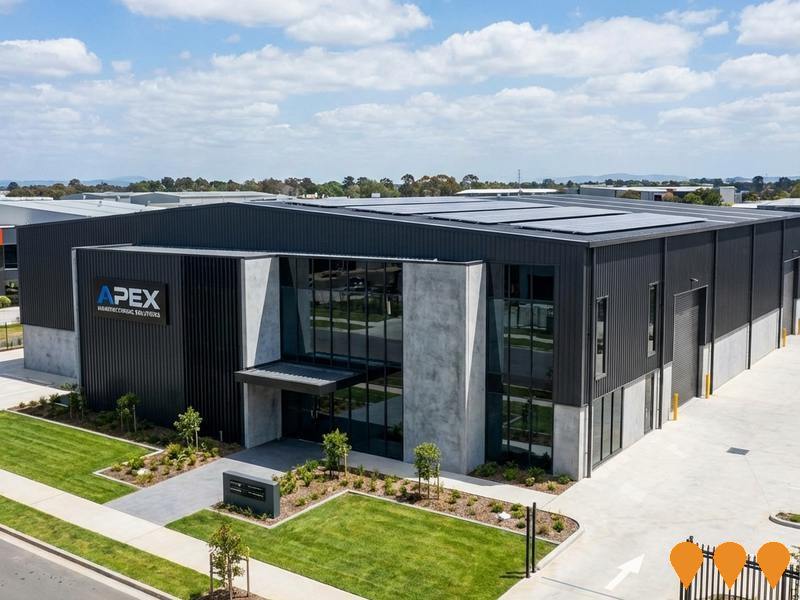
Employment
Employment drivers in Maryborough are experiencing difficulties, placing it among the bottom 20% of areas assessed across Australia
Maryborough in Queensland has a diverse workforce with both white and blue collar jobs. Essential services sectors are well represented, with an unemployment rate of 9.0% as of June 2025.
The area experienced employment growth of 5.4% over the past year. There are 7,586 residents employed currently, with an unemployment rate of 5.1%, which is higher than the Rest of Queensland's rate of 3.9%. Workforce participation in Maryborough lags behind at 42.9%, compared to the Rest of Queensland's 59.1%. Health care & social assistance, retail trade, and education & training are the dominant employment sectors among residents.
The area specializes in health care & social assistance, with an employment share of 1.3 times the regional level. Conversely, construction shows lower representation at 7.2% compared to the regional average of 10.1%. Many Maryborough residents commute elsewhere for work based on Census data. Between June 2024 and June 2025, employment levels increased by 5.4%, while labour force increased by 7.4%, resulting in a rise in unemployment by 1.8 percentage points. National employment forecasts from Jobs and Skills Australia, issued in May 2025, project an expansion of 6.6% over five years and 13.7% over ten years. Applying these projections to Maryborough's employment mix suggests local growth of approximately 6.3% over five years and 13.5% over ten years.
Frequently Asked Questions - Employment
Income
Income metrics place the area in the bottom 10% of locations nationally according to AreaSearch analysis
AreaSearch's latest postcode level ATO data for financial year 2022 shows Maryborough's median income among taxpayers is $42,669, with an average of $49,261. This is lower than the national average. The Rest of Qld has a median income of $50,780 and an average of $64,844. Based on Wage Price Index growth of 13.99% since financial year 2022, current estimates would be approximately $48,638 (median) and $56,153 (average) as of September 2025. The 2021 Census reveals household, family and personal incomes in Maryborough fall between the 3rd and 5th percentiles nationally. Income analysis indicates that the largest segment comprises 32.2% earning $400 - $799 weekly (6,206 residents), differing from the surrounding region where the $1,500 - $2,999 category predominates at 31.7%. The prevalence of lower-income residents (40.7% under $800/week) suggests constrained household budgets across much of the locality. Housing affordability pressures are severe, with only 84.4% of income remaining, ranking at the 5th percentile.
Frequently Asked Questions - Income
Housing
Maryborough is characterized by a predominantly suburban housing profile, with a higher proportion of rental properties than the broader region
Maryborough's dwelling structure, as per the latest Census, consisted of 86.5% houses and 13.5% other dwellings (semi-detached, apartments, 'other' dwellings), compared to Non-Metro Qld's 91.8% houses and 8.2% other dwellings. Home ownership in Maryborough stood at 39.7%, with mortgaged dwellings at 28.1% and rented ones at 32.3%. The median monthly mortgage repayment was $1,083, below Non-Metro Qld's average of $1,179. Median weekly rent in Maryborough was $255, compared to Non-Metro Qld's $260. Nationally, Maryborough's mortgage repayments were significantly lower than the Australian average of $1,863, and rents were substantially below the national figure of $375.
Frequently Asked Questions - Housing
Household Composition
Maryborough features high concentrations of lone person households, with a lower-than-average median household size
Family households constitute 62.2% of all households, including 18.7% couples with children, 27.7% couples without children, and 14.8% single parent families. Non-family households account for the remaining 37.8%, with lone person households at 34.1% and group households comprising 3.7%. The median household size is 2.2 people, which is smaller than the Rest of Qld average of 2.3.
Frequently Asked Questions - Households
Local Schools & Education
Maryborough faces educational challenges, with performance metrics placing it in the bottom quartile of areas assessed nationally
The area's university qualification rate is 9.9%, significantly lower than the Australian average of 30.4%. This presents both a challenge and an opportunity for targeted educational initiatives. Bachelor degrees are most common at 7.3%, followed by postgraduate qualifications (1.3%) and graduate diplomas (1.3%). Vocational credentials are prevalent, with 40.1% of residents aged 15+ holding such credentials - advanced diplomas at 8.5% and certificates at 31.6%.
Educational participation is high, with 27.8% of residents currently enrolled in formal education. This includes 10.9% in primary education, 9.7% in secondary education, and 2.2% pursuing tertiary education. The area has 13 schools serving 5,064 students, with varied educational conditions across Maryborough. The schools include 6 primary, 3 secondary, and 4 K-12 schools. The area functions as an education hub with 26.3 school places per 100 residents, significantly above the regional average of 12.3, attracting students from surrounding communities. Note: where schools show 'n/a' for enrolments, please refer to the parent campus.
Frequently Asked Questions - Education
Schools Detail
Nearby Services & Amenities
Transport
Transport servicing is low compared to other areas nationally based on assessment of service frequency, route connectivity and accessibility
Maryborough has 111 active public transport stops, all of which are bus stops. These stops are served by seven different routes that together facilitate 527 weekly passenger trips. The accessibility of the transport system is rated as moderate, with residents on average being located 472 meters from their nearest stop.
On a daily basis, there are an average of 75 trips across all routes, which translates to approximately four weekly trips per individual stop.
Frequently Asked Questions - Transport
Transport Stops Detail
Health
Health performance in Maryborough is a key challenge with a range of health conditions having marked impacts on both younger and older age cohorts
Maryborough faces significant health challenges, with various conditions affecting both younger and older age groups. Private health cover is low, at approximately 46% (around 8,885 people), compared to the national average of 55.3%.
The most prevalent medical conditions are arthritis (13.0%) and mental health issues (11.9%). About 52.6% of residents report no medical ailments, slightly lower than the Rest of Qld's 54.0%. The area has 26.3% (around 5,075 people) aged 65 and over, lower than Rest of Qld's 29.9%. Senior health outcomes present challenges broadly aligned with the general population's health profile.
Frequently Asked Questions - Health
Cultural Diversity
The latest Census data sees Maryborough placing among the least culturally diverse areas in the country when compared across a range of language and cultural background related metrics
Maryborough was found to have a cultural diversity below the average, with 87.7% of its population being citizens, 90.3% born in Australia, and 97.3% speaking English only at home. The predominant religion in Maryborough is Christianity, accounting for 51.7% of its population, compared to 52.8% across the rest of Queensland. The top three ancestry groups in Maryborough are English (32.7%), Australian (31.2%), and Irish (8.0%).
Notably, some ethnic groups have differing representations: German is slightly overrepresented at 6.5%, Australian Aboriginal is higher at 3.8% compared to the regional average of 3.4%, and Scottish is lower at 8.0%.
Frequently Asked Questions - Diversity
Age
Maryborough hosts an older demographic, ranking in the top quartile nationwide
Maryborough has a median age of 47 years, which is higher than Rest of Qld's 41 years and the national average of 38 years. The 65-74 age group is over-represented in Maryborough at 13.6%, compared to the Rest of Qld average. Conversely, the 5-14 year-olds are under-represented at 10.2%. Between 2021 and present, the 0-4 age group has increased from 4.3% to 4.9%, while the 5-14 cohort has decreased from 11.3% to 10.2%. By 2041, demographic modeling projects significant changes in Maryborough's age profile. The 25-34 age group is expected to grow by 412 people (19%), from 2,118 to 2,531. Notably, the combined 65+ age groups will account for 55% of total population growth, reflecting the area's aging demographic profile. Conversely, population declines are projected for the 5-14 and 55-64 cohorts.
